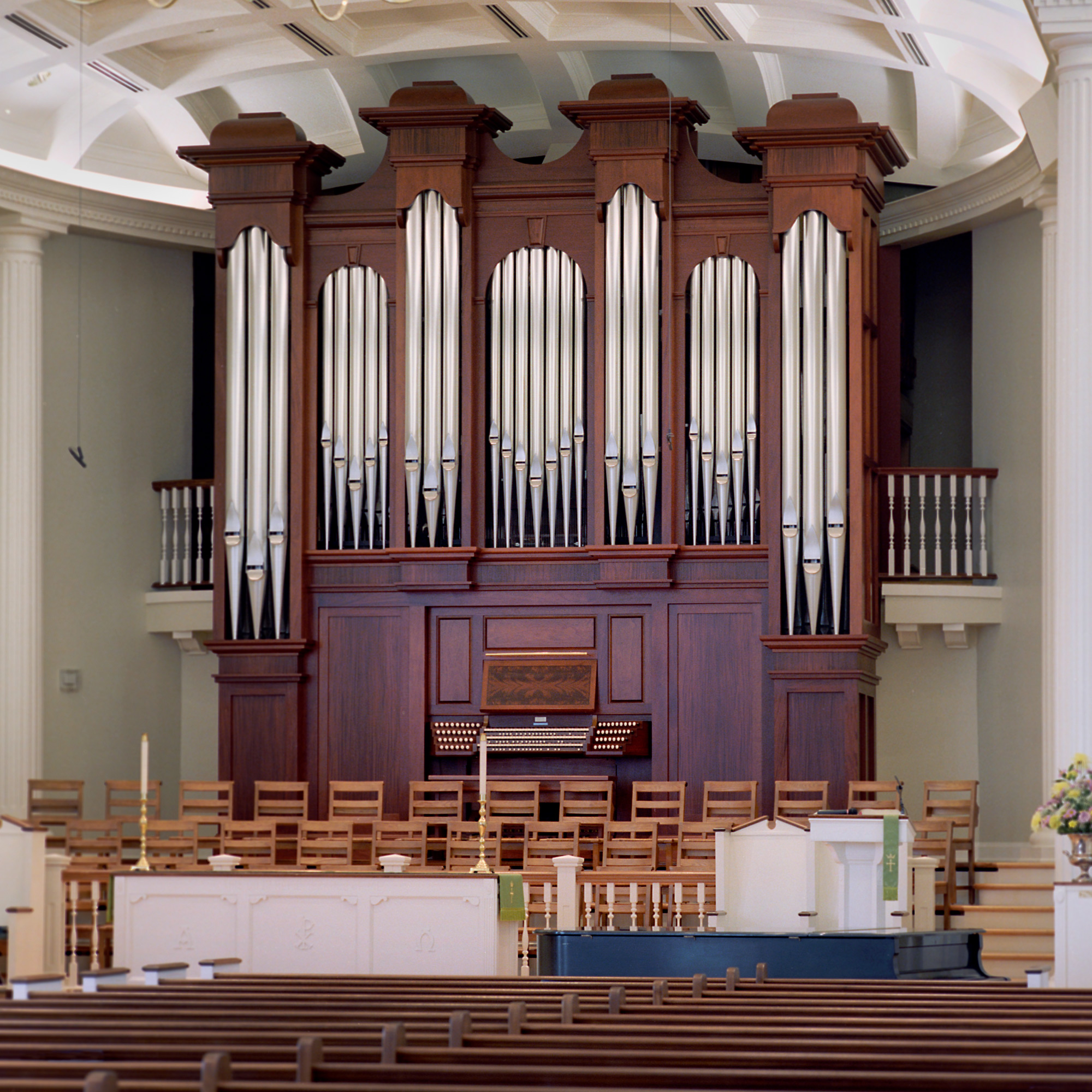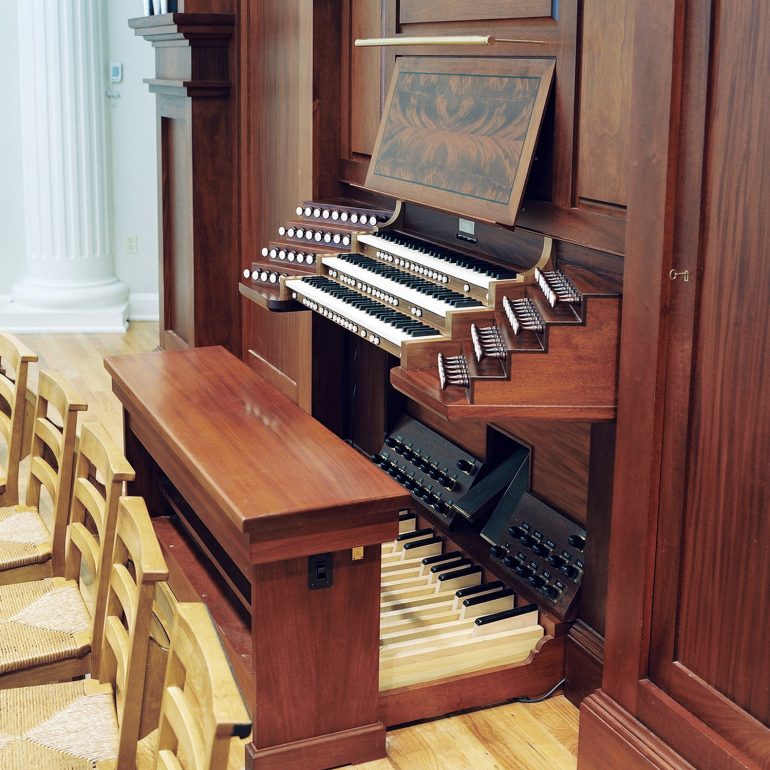
- phone: 978.283.1909
- email: cbfisk@cbfisk.com
Opus 119
First Presbyterian Church
Gainesville, FL
Ranks: 52Independent Voices: 40
Pipes: 2930
Created: 2002
With the 1997 decision to renovate their church, the people of First Presbyterian Church showed great enthusiasm to unlock the liturgical and musical potential of their sanctuary. The renovation transformed the church architecturally and created an excellent space in which to hear an organ.
The building of Opus 119 presented the challenge of integrating the sound of a large three-manual organ in a small room with a barrel vault. The original vault, likely to be detrimental to the tone of the organ by focusing too much direct sound into the body of the church, was removed and replaced by a coffered design constructed of heavy plaster. The coffering diffused the high-frequency energy and unified the balance of the organ’s sound across the width of the church. Other acoustical improvements to the church included a new nearly-silent HVAC system, windows with heavy glass capable of reflecting low frequency energy, and sculpted plaster walls to reduce tonal distortion caused by cross-room flutter echoes.
The tonal design of Opus 119 reflects the broad nature of many modern Fisk instruments. It is the result of much thoughtful discussion with regard to the requirements of organ in service playing and solo organ literature. The eclectic stop list is a unique, historically informed blending of stops representing many of the great eras and schools of organbuilding.
The success of this project is a credit to the design process; to the close collaboration between organ builder, acoustician, and architect; and to the support of an exceptional church staff and organ committee. Opus 119 was the focus of an article by Barbara Jepson on organ building in America, which appeared in the October 30, 2002 edition of the Wall Street Journal.

Great, Manual I
Prestant 16′
Octave 8′
Spillpfeife 8′
Flûte harmonique 8′
Violoncelle 8′
Octave 4′
Rohrflöte 4′
Twelfth 2 2/3′
Fifteenth 2′
Terz 1 3/5′
Mixture V-VII
Trommeten 8′
Trompette 8′
Clairon 4′
Positive, Manual II
Principal 8′
Gedackt 8′
Octave 4′
Baarpijp 4′
Nasard 2 2/3′
Doublet 2′
Quarte de Nasard 2′
Tierce 1 3/5′
Scharff IV
Dulcian 16′
Cromorne 8′
Swell, Manual III
enclosed
Bourdon 16′
Bourdon 8′
Flûte traversière 8′
Viole de gambe 8′
Voix céleste 8′
Principal 4′
Flûte octaviante 4′
Octavin 2′
Mixture IV
Basson 16′
Trompette 8′
Hautbois 8′
Pedal, 32 Notes
Bourdon 32′ ext SW
Contrebasse 16′
Prestant 16′ Great
Bourdon 16′ from SW
Octave 8′
Spillpfeife 8′ Great
Superoctave 4′
Posaune 16′
Trompette 8′ Great
Clairon 4′ Great
Couplers:
Positive to Great
Swell to Great
Swell to Positive
Great to Pedal
Positive to Pedal
Swell to Pedal
Swell Super to Pedal
Octaves graves (Great)
Accessories:
Great and Positive Tremulant
Swell Tremulant
Flexible Wind
Balanced Swell Pedal
Key action: Direct mechanical (tracker)
Kowalyshyn Servo-pneumatic Lever
Stop action: Electric Solenoid
Combination Action: A modern solid state action with multiple levels of memory.
Casework: A single cabinet of solid mahogany, free standing in the front of the Church
Front pipes of polished tin



